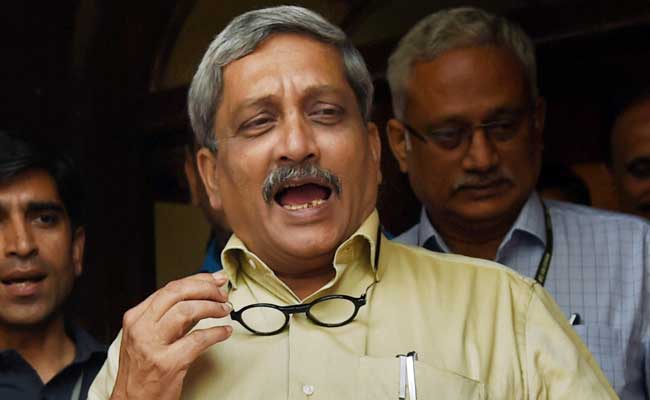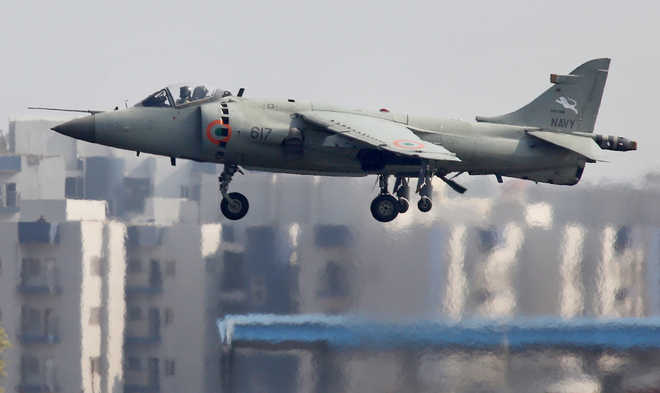The US #DeepState has had a fine run, but will now discard Saudi Arabia as it is no longer useful to them, says Rajeev Srinivasan.

The #28pages scandal has apparently dropped off the front pages in the US, but it is odd that the official account of 9/11 would have an entire chapter redacted out of it, especially one that allegedly deals with the Saudi role.
The fact that it has been kept secret suggests that powerful people want to hide something. The fact that successive US presidents have not bothered to release the information suggests that there is bipartisan consensus, which the #DeepState, more powerful than presidents, wishes to maintain.
The #DeepState, shorthand for the military-industrial-media-academia-church elites who actually control the US, and whose primary objective is its own self-preservation (and not necessarily the US’s national interest) is much in the limelight these days because Hillary Clinton epitomises it, and Donald Trump’s entire campaign positioning is that he isn’t part of it (at least not yet).
The question, then, is why the #DeepState is shielding the Saudis. For the longest time, the answer appeared to be contained in George Kennan’s pithy statement, although it may have been apocryphal (and I paraphrase): ‘The US has 8% of the world’s population, and enjoys 50% of its resources. The goal of US foreign policy is to keep it that way.’
Thus, during the Cold War and later, America went on foreign adventures, and spilled its blood, sweat and tears, principally to protect its access to other peoples’ oil and gas. There was a comfortable certainty that the US and the Saudis would see eye to eye, even when OPEC sharply upped oil prices in 1973. Or even later, when the Saudis used their clout as the biggest producer to maintain oil prices at very high levels, and the US went along.
The rationale was not far to find: It only cost the Saudis $2 or so to dig the stuff out of the ground (incremental cost, that is), and so they made almost monopoly profits when the selling price per barrel soared to $120. Which, we could see, was convenient for the American military ecosystem, because the Saudis were also some of the biggest arms buyers in the world.
Thus, if Saudi profits went up, they would buy more American weapons, America had a dependable ally in West Asia, and the recycled petrodollars could be borrowed by the Americans. And the Americans were assured of oil supplies. All told, a terrific positive feedback loop.
But this cosy equilibrium was upset by the arrival of fracking, and the resultant boom in American production, which now makes it the world’s biggest oil producer. This disruptive technological innovation, of course, is also the prime reason behind the collapse in oil prices over the last couple of years. Significantly, the US ceased to need Saudi Arabia as a supplier.
The result has been swift: After decades of favouring the Saudis in their internecine struggles with Iran across the Sunni-Shia divide, the Americans began to reverse course. Iran, long in the doghouse, and famously one of the ‘Axis of Evil’, has been rehabilitated, and their oil is beginning to appear on world markets, and that will also keep a lid on prices.
Two other intriguing points to note: first, the proxy war in Yemen, with Iran and the Saudis supporting opposite sides, is not going well for the Saudis. That means all the expensive weaponry they have bought cannot even bring them victory against a rag-tag bunch of Houthi rebels supported by Iran. It is also possible that the US weapons have been kill-switched or degraded.
Second, the Saudis are perhaps feeling the economic pinch, as they went to the markets for the first time in years with a $10 billion bond offering, and they are also putting their crown jewels, Aramco, on the market, in what is expected to confirm its standing as the world’s most valuable company at over $1 trillion in market capitalisation.
Thus, there are a few possibilities: One is that the US simply doesn’t need the Saudis any more, and are throwing them under the bus. Second, the increasing influence of Saudi-induced fundamentalism is now beginning to worry the #DeepState, as Al Qaeda, the Taliban, and ISIS are all threatening to hurt its interests. In particular, the influx of Syrian, Iraqi and Libyan migrants (mixed with ISIS and other terrorists) may have a material impact on Europe, their civilisational ally.
That means, I suspect, that the Saudis are toast. But why has the US been so chummy with them so far? Of course, there is the allure of defence purchases, but there has to be something more. Here’s a conjecture (and I admit I have no proof of this): I claim that #DeepState saw an interesting opportunity when the Saudi-led OPEC went on its price-gouging spree.
That was the opportunity to effect a massive transfer of wealth from poor, developing nations. Indeed, that is exactly what happened: the 1973 oil price hike and the price floor maintained thereafter extorted several trillion dollars from poor countries and into the pockets of the Saudis and other OPEC members.
How did this benefit #DeepState? Well, because they could appropriate all this transfer of wealth from poor developing nations in one fell swoop by selling lots of weapons to the Saudis. And they could then go around lecturing said poor, unsuspecting developing nations while laughing all the way to the bank. Machiavellian, for sure.
I came up with this hypothesis because I read a similar suggestion that the British quite consciously let Tipu run riot in Malabar, raiding temples and looting the gold saved from the age-old trade in spices. Then once he had brought it all to Srirangapatnam, the British sallied forth as saviours, defeated him, and took the gold. And said very rude things about Tipu.
Thus the British smelled of roses, got great optics, got rid of a competitor, and got the gold: A very fine tactic indeed. They probably even quietly encouraged Tipu on his campaigns into Malabar, but ended up with great PR.
Similarly, I suspect #DeepState let it be known to the Saudis that they were fine with the price-gouging so long as they bought the weapons, thus recycling petrodollars. A marvellous win-win: The military-industrial complex hums along, the Saudis are tied to the Americans, and when it comes time to actually deploy the weapons, the Saudis discover that the weapons don’t quite work — as they seem to be finding out disastrously in Yemen. Kill-switch, maybe?
All this trade in oil would be in dollars, as agreed by all, so that the US’s ability to manage the dollar as a reserve currency, and print as much as they wished, would be maintained, which also allowed them to soak up a lot of savings from Japan and later China. Notably, there is a school of thought that Muammar Gaddafi was liquidated especially because he wanted gold for his oil, not dollars.
So if my hunch is correct, #DeepState has had a fine run, but will now discard Saudi Arabia as it is no longer useful to them.
But then perhaps I overestimate them. It has come to light that the Pakistanis have been running rings around the CIA. Apparently the Pak ISI poisoned the CIA station chief, Mark Kelton, in retaliation for the bin Laden execution.
Earlier, they had outed another CIA station chief, and forced him to escape by climbing into a visiting dignitary’s plane. And more disconcertingly, they had the woman station chief and seven of her colleagues blown up by a Jordanian double agent in Khost in 2009.
Maybe #DeepState is not so smart after all, and the Saudis will have the last laugh, as they have re-created Islam in their own image, a dire long-term threat to their fellow Meso-Semitic faith, Christianity.
IMAGE: US President Barack Obama and Saudi King Salman following their meeting at the Erga Palace in Riyadh, Saudi Arabia, April 20, 2016. Photograph: Kevin Lamarque/Reuters

























































































































